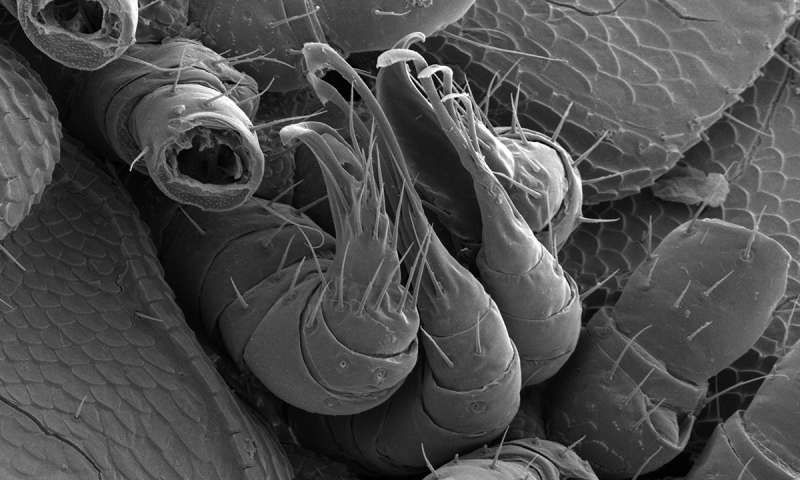Magnificent Millipede Has 414 Legs and Four Penises
Meet Illacme tobini, a newly described species of millipede discovered in a cave in Sequoia National Park
/https://tf-cmsv2-smithsonianmag-media.s3.amazonaws.com/filer/41/ee/41ee890b-76b9-4b68-9228-6e1cfe163c62/millipede.jpg)
With Halloween fast approaching, researchers just added another creepy crawly to the fright night list with the description of a new species of millipede Illacme tobini. This tiny thread-like millipede has 414 legs and was discovered in the previously unexplored marble caves of California's Sequoia National Park.
But the legs are only the beginning, according to the study recently published in the journal ZooKeys. Its body armor houses 200 poison glands that express an unknown type of toxin and is covered in silk-secreting hairs. What is particularly remarkable, however, are its four reproductive appendages. These likely are relatively new evolutionarily speaking, developed over time from the creature's many limbs, reports Stephanie Pappas for LiveScience.
Most millipede species have 80 to 100 legs, which puts this latest creepy crawly discovery well above average in leg count. But it's far from the world’s leggiest millipede. That title goes to its close relative, llacme plenipes, a species with up to 750 legs, first collected in 1928 but not seen again until 2012 when it was found outside San Francisco.

“I never would have expected that a second species of the leggiest animal on the planet would be discovered in a cave 150 miles away,” Paul Marek, researcher at Virginia Tech who helped describe the species, says in the press release.
Between 2002 and 2009, researchers began a major survey of the unexplored caverns in Sequoia and nearby Kings Canyon National Parks, Pappas reports. In October 2006 cave biologist Jean Krejca discovered the little 0.8-inch millipede in Lange Cave, sending the sample to Marek, who realized it was only the second species in the genus Illaceme ever discovered. It is named after Ben Tobin, a Grand Canyon cave specialist.
Pappas reports that though the researchers spent years searching 63 other locations in the Sierra Nevada foothills, they were unable to find any more examples of the new species, making the single male specimen the only known example.
It’s believed the eyeless millipede may feed on fungus. Pappas also reports that researchers are not sure if tobini is restricted to caves or if it may be found on the undersides of rocks, similar to many of the world’s other millipede species.
While the new species might have the second greatest number of legs, it's so small it's hardly the creepiest millipede on the block. For a better Halloween scare, check out the giant African millipede, which can grow to one foot in length and has about 400 legs.
